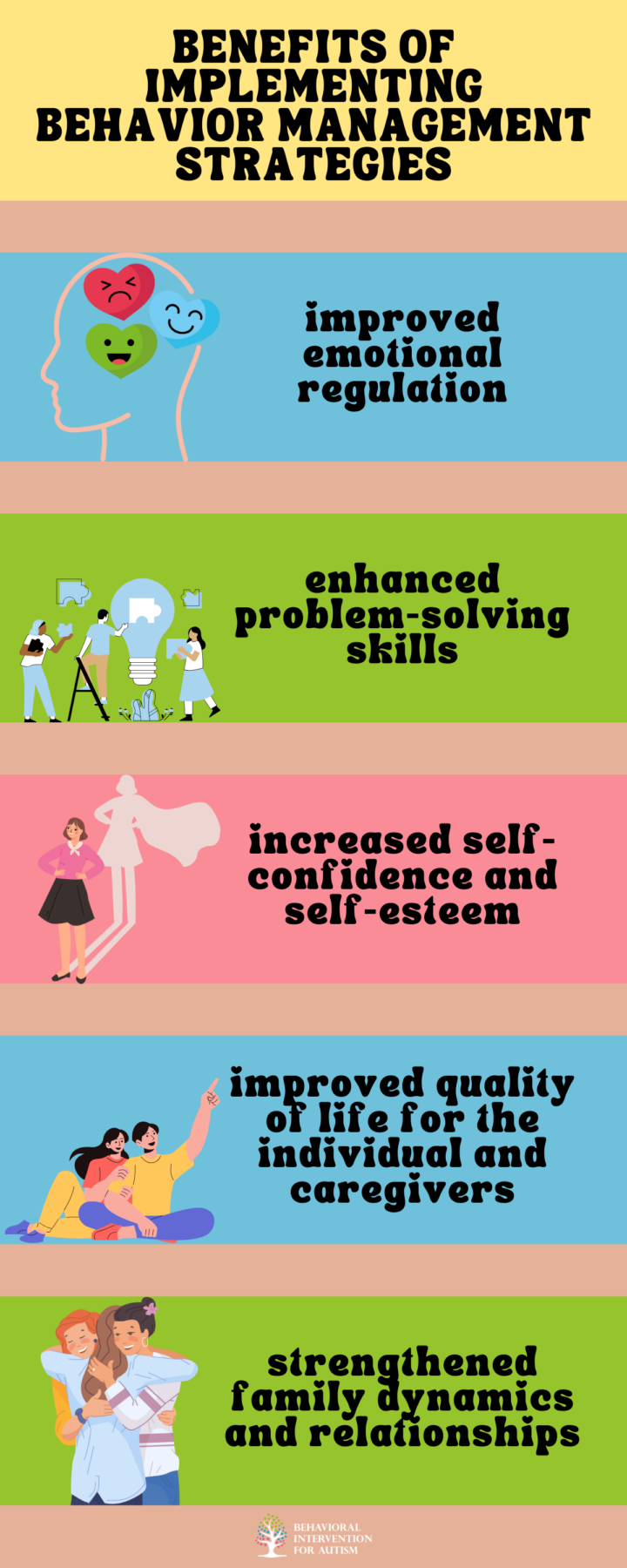
Table of Contents
Understanding autism behaviors means recognizing the common traits exhibited by individuals on the spectrum. Various factors shape these behaviors, making it essential for caregivers and loved ones to gain a thorough grasp of the nuances surrounding autism.
Common Behavioral Traits in Autism
Individuals with autism spectrum disorder (ASD) may display a wide range of behavioral characteristics that are unique to the condition. While the presentation of autism behaviors can vary significantly from person to person, some common traits include:
Behavioral Trait | Description |
Difficulty with social interactions | Challenges in understanding maintaining eye contact, social cues, and engaging in reciprocal communication. |
Repetitive behaviors | Engaging in repetitive movements or actions, such as rocking, hand-flapping, or repeating phrases. |
Sensory sensitivities | Heightened sensitivity or aversion to sensory stimuli, including sound, light, touch, and textures. |
Resistance to change | Difficulty adapting to transitions or unexpected changes in routine, leading to anxiety or distress. |
Special interests | Intense focus or passion for certain topics, hobbies, or activities, often to the exclusion of others. |
Recognizing these common behavioral traits is essential for caregivers and professionals involved in supporting individuals with autism. Understanding how these traits manifest can help in developing effective behavior management strategies tailored to the individual’s specific needs.
Factors Influencing Autism Behaviors
While the core characteristics of autism remain consistent, various factors can influence and exacerbate autism behaviors. These factors play a significant role in shaping how individuals with ASD interact with their environment and respond to stimuli. Some key influencers of autism behaviors include:
Influencing Factor | Impact on Behaviors |
Communication difficulties | Inability to effectively express needs, emotions, or preferences may result in frustration or outbursts. |
Environmental stressors | Changes in routine, unfamiliar settings, or loud noises can trigger anxiety and behavioral reactions. |
Co-occurring conditions | Conditions like anxiety, ADHD, or sensory processing disorder can impact behavior regulation and coping mechanisms. |
Social expectations | Challenges in interpreting social norms and expectations may cause confusion or social withdrawal. |
Understanding the factors that influence autism behaviors allows caregivers and professionals to create holistic, individualized strategies that help individuals with autism navigate daily challenges and promote overall well-being.

Importance of Behavior Management
Effective behavior management is crucial for enhancing well-being and quality of life in individuals with autism. Recognizing the impact and benefits of implementing these strategies is key to providing meaningful support and care.
Impact of Effective Behavior Management
The impact of implementing effective behavior management strategies in individuals with autism is profound. By addressing challenging behaviors and promoting positive ones, it fosters a conducive environment for learning, development, and social interaction. Here are some key impacts of effective behavior management:
- Improved communication and social skills
- Enhanced quality of relationships
- Increased independence and self-regulation
- Reduction in behavioral issues
- Enhanced participation in daily activities
Benefits of Implementing Behavior Management Strategies
Implementing behavior management strategies not only addresses challenging behaviors but also cultivates a supportive and inclusive environment for individuals with autism. The benefits of implementing these strategies extend beyond immediate behavior modification and have lasting effects on the individual’s overall well-being. Here are some key benefits of implementing behavior management strategies:

Effective behavior management enables caregivers, educators, and professionals to collaborate on tailored strategies that address the unique needs of individuals with autism. Prioritizing both proactive and reactive approaches, combined with consistency and flexibility, fosters a supportive environment that promotes positive behaviors and enhances quality of life for those on the autism spectrum.
Proactive Strategies
Managing autism behaviors effectively involves proactive strategies that reduce challenging behaviors and create a structured environment. Two impactful approaches are establishing structured routines and using visual supports alongside communication aids, both of which enhance behavior management significantly.
1. Creating Structured Routines
Establishing a consistent and structured routine is fundamental in providing predictability and stability for individuals with autism. Routines can help individuals understand what to expect throughout the day, which can alleviate anxiety and prevent meltdowns. By incorporating visual schedules and clear expectations, caregivers can help individuals navigate daily activities with greater ease. The following are the components of structured routines:
- Specific daily schedule
- Visual schedule or timetable
- Consistent meal and bedtime routines
- Clear transitions between activities
Implementing structured routines not only fosters a sense of security and organization but also enhances independence and self-regulation in individuals with autism. It is essential to tailor the routine to the individual’s preferences and sensory sensitivities to ensure its effectiveness in managing behaviors.
2. Visual Supports and Communication Aids
Visual supports and communication aids are valuable tools that can enhance communication and comprehension for individuals with autism. Visual aids, such as picture cards, visual schedules, choice boards, and social stories, provide concrete visual cues to help individuals understand expectations, transitions, and social interactions.
Incorporating visual supports into daily routines helps caregivers facilitate understanding, reduce anxiety, and promote independence for individuals with autism. Tailoring these aids to the individual’s communication style enhances effective interaction and improves behavior management.
Integrating structured routines and visual supports into daily interactions and environments can contribute significantly to proactive behavior management for individuals with autism. By implementing these strategies consistently and personalized to individual needs, caregivers and professionals can create supportive and empowering environments that enhance the well-being and quality of life for individuals with autism.
Reactive Strategies
Effective reactive strategies are essential in addressing challenging behaviors in individuals with autism, supporting positive outcomes. Two key approaches are explored: de-escalation techniques and positive reinforcement.
1. De-Escalation Techniques
De-escalation techniques are crucial for managing and diffusing crisis situations that may arise due to behavioral challenges in individuals with autism. These strategies aim to prevent escalation and promote a sense of calm and safety for both the individual and those around them.
One effective de-escalation technique is visual supports, such as providing a visual schedule or a visual calm-down corner. These visual cues can help individuals with autism understand what to expect next and provide a sense of predictability, which can help reduce anxiety and prevent meltdowns.
Another de-escalation technique is redirecting attention to a calming activity or sensory tool. By redirecting focus to a preferred activity or sensory item, individuals with autism can regain a sense of control and self-regulate their emotions.
2. Implementing Positive Reinforcement
Positive reinforcement is a powerful tool for encouraging desired behaviors in individuals with autism. This strategy involves rewarding positive behaviors to increase the likelihood of those behaviors occurring again in the future.
One way to implement positive reinforcement is through a token economy system. This system involves giving tokens or points for completing tasks or exhibiting positive behaviors, which can then be exchanged for rewards or privileges. This method helps individuals with autism understand the connection between their actions and the positive outcomes they receive.
Another effective positive reinforcement strategy is social reinforcement, which involves praising and acknowledging positive behaviors verbally or through gestures. By providing social praise and recognition, individuals with autism feel motivated and valued, leading to increased engagement in desired behaviors.
Incorporating de-escalation techniques and positive reinforcement into daily interactions and behavior management plans effectively addresses challenging behaviors in individuals with autism. These reactive strategies, combined with proactive approaches, foster a holistic and supportive environment where individuals can thrive and succeed.

Collaborating with Professionals
Effectively managing autism behaviors can be enhanced through collaboration with professionals, offering essential support and guidance for individuals with autism and their caregivers. Working with therapists and specialists, connecting with support groups, and utilizing available resources are essential for success.
Discover Effective Support Solutions
Implementing effective behavior management strategies is essential for individuals with autism, helping them navigate daily challenges and fostering positive interactions. Techniques such as positive reinforcement, visual schedules, and social stories can significantly improve behavior and communication skills.
We specialize in providing high-quality ABA therapy in Florida, focusing on personalized approaches that cater to each individual’s unique needs. Our dedicated team at Behavioral Intervention For Autism is committed to creating a supportive and nurturing environment where growth and learning can thrive. If you’re ready to explore how our services can benefit you or your loved one, contact us today to discuss the options available!
- 9 Common Obsessions of Children With Autism You Should Know - February 25, 2025
- What is Neurodiversity? A Guide to Embracing Differences - February 25, 2025
- Understanding Hyperfocus in Autism: What It Means and Why It Happens - February 25, 2025
